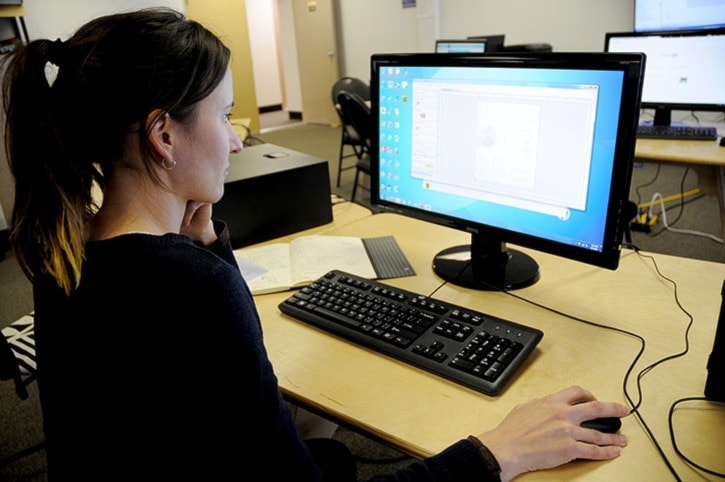As the Fab Lab says, “incubators aren’t just for chicks anymore.”
That said, there has been a flock of newbie techies walking through the front doors of MIDAS every week since the state-of-the-art facility opened in Trail last fall.
Known as “Mr. Technology,” Lab Director Brad Pommen has introduced almost 1,000 people from all walks of life to the Glenmerry space - even on a snowy Friday evening (Feb. 3) nine people were signed up for a laser cutting and 3D printing tutorial.
“Since opening, we’ve run 218 people through courses and just over 600 in tours,” Pommen began. “And I just ran 150 high school students, from J.L. Crowe and Stanley Humphries, through here over two days.”
MIDAS (Metallurgical Industrial Development Acceleration Studies) is a multimillion-dollar technology base that offers its membership the skills and courses required to operate advanced machines such as 3D printers, 3D scanners, laser cutters and CNC milling equipment.
Equipment examples, courtesy of MIDAS

The lab is available to beginner and advanced learners over the age of 16. No matter the level of expertise, however, all users must complete a competency course designed to get them using one or more pieces of the costly equipment. Safety precautions are posted and respective manuals are on hand, however, Pommen and the MIDAS floor staff are always nearby to ensure each machine is used safely - after all, the equipment is top notch and worth at least a half million dollars.
So it’s not a stretch to say that creative minds and innovators in the region, like Nicolene McKenzie, Mich Duvernet and Eric Holloway, would be limited in terms of technological opportunity without the regional MIDAS ‘fab’rication space.
The Trail Times dropped by the facility during a blustery Friday afternoon (Feb. 3), curious about who actually uses the lab on a typical day as well as the “why” such sophisticated equipment is needed. All three people in the digital laboratory drove over an hour on slushy roads to get to the Trail site, and all three were intensely focused on their prototype design.
Nicolene McKenzie is a recent graduate from the Emily Carr University of Art and Design. After completing the Industrial Design Program, she moved back to her hometown of Nelson for a bit of a breather while exploring her next career move.
MIDAS fits into the picture as a vital resource the young designer needs to up her game with hands-on experience.
“I was very familiar with 3D printing, laser cutting and the CNC machine,” McKenzie explained. “But the program (Emily Carr) was very busy, and I didn’t get a lot of chance (to use the equipment). So I am looking to explore this area more, and how I can bring that to my practice which is designing products, as well as my artistic practice.”
She found out about the Trail facility through word of mouth, recently completed the “Shopbot CNC” course, and was walking through the program that afternoon.
“For me this will be more hands on, because at school we sent our (design) files to the technician and they did the work,” she said. “Today I am going to try cutting out some basic shapes to use for jewelry or tile designs -this is my first time so it is exciting for me.”
Seated at another table that afternoon were two friends from Winlaw.
Originally from Ottawa, Mich Duvernet, a former ski guide, brought along computer savvy Eric Holloway. They also recently completed the Shopbot CNC course and were gearing up to begin prototyping a lighting fixture.
The digital fabrication laboratory or “Fab Lab” is intended for rapid prototyping and training in additive manufacturing, which is a method of building 3D objects by adding layer upon layer of material, such as plastic, metal, wood or concrete.
Users are able to quickly create a model of an item like a mechanical part, for example, using 3D computer-aided design and 3D printer. Electronics, circuit construction, CNC machines, molding, casting, metalwork and woodwork are other areas of focus.
“We are working on a lighting design that I am bringing to market,” said Duvernet. “I’ve been doing a lot of this kind of stuff, like the finicky bits and pieces by hand. Since I know<span cla
